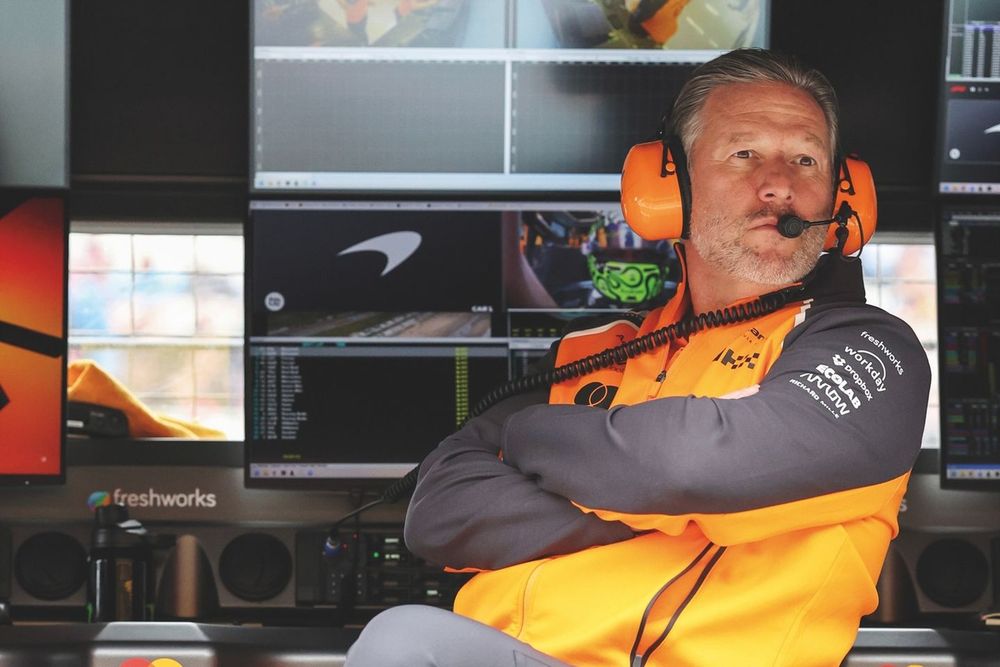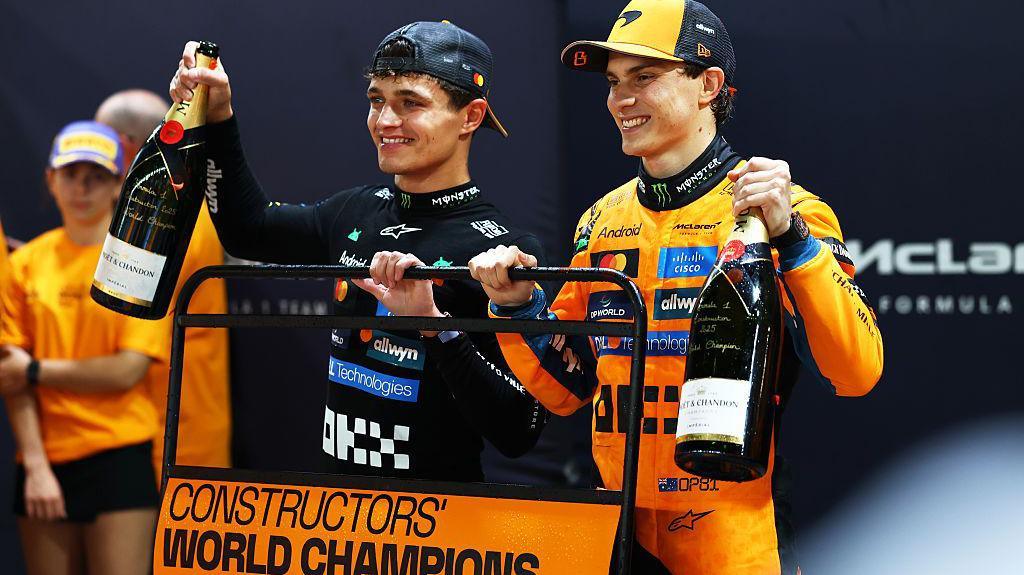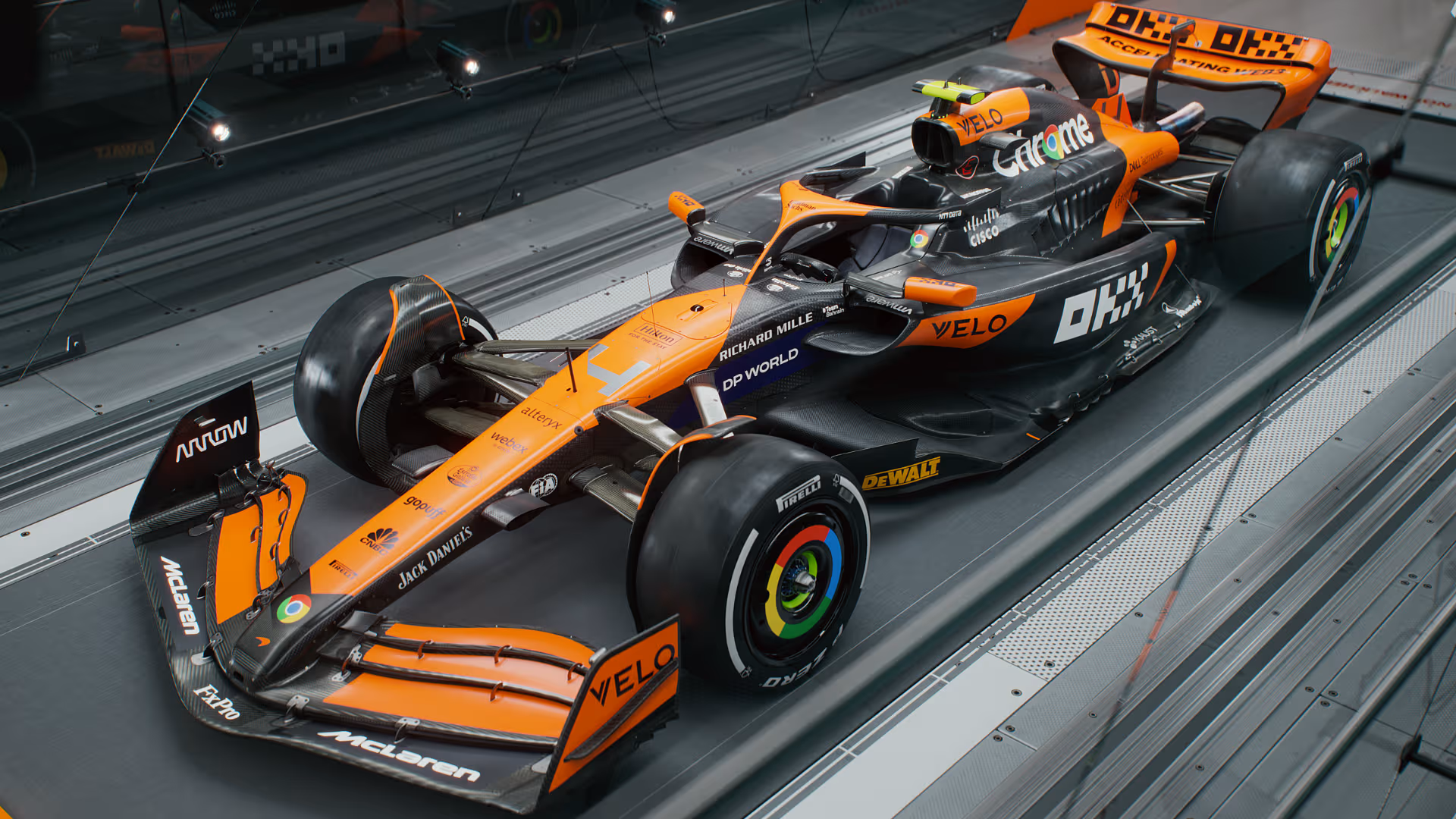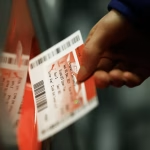McLaren's engines roared louder than ever during Thursday's practice sessions at the 2025 Las Vegas Grand Prix. Lando Norris topped the timesheets in Free Practice 2, while Oscar Piastri stayed hot on his heels, signaling the team's unbreakable momentum just weeks after clinching the Constructors' Championship. This dominance caps a stunning revival that began in the shadows of financial despair. Five years earlier, the iconic Formula 1 squad teetered on collapse amid crippling debts and vanishing sponsors. Now, guided by CEO Zak Brown, McLaren stands as a $4.5 billion behemoth, with 2024 revenues hitting $614 million and profits turning a once-grim $137 million loss into a healthy $61 million gain.
From Financial Abyss to Track Triumph
The turnaround feels like a Hollywood script, yet it unfolded in boardrooms and garages with raw determination. Back in 2018, McLaren's operating losses swallowed $137 million against meager $165 million in revenue, a brutal squeeze from off-track woes and lackluster results. The COVID-19 crisis in 2020 pushed the team to the edge, forcing emergency measures just to keep the lights on.
Fast forward to today, and McLaren's papaya-liveried cars are frontrunners, with Norris and Piastri delivering podiums like clockwork. Their third and fourth-place finishes at the Singapore Grand Prix in October underscored a championship-caliber resurgence. According to analysis reviewed by Finance Monthly, this on-track fire has ignited investor confidence, boosting the team's valuation sixfold since its darkest days.
Zak Brown's arrival as CEO that same year injected fresh urgency. A former marketer with a knack for high-stakes deals, he ditched the old reliance on prize money alone. Instead, he built a commercial fortress, drawing in powerhouse partners like Google, Cisco, Hilton, Lego, and the crown jewel, Mastercard.
That latest sponsorship, inked this fall, pumps an estimated $100 million annually into the coffers. Brown's approach flipped the script entirely. Commercial deals now fuel 70 to 75 percent of revenues, a seismic pivot from the engineering-first model that nearly doomed the team. "Zak flipped the model, get sponsors, treat them well, reinvest in engineering, win races," says Ricky Paugh of 1440Sports, his voice laced with the quiet awe of witnessing a near-miracle. "He created a flywheel that competitors simply can't match." Those words carry an undercurrent of relief, echoing the collective exhale from a fanbase that once feared the end.

McLaren CEO Zak Brown in the paddock, steering the team’s strategy both on the track and in high-stakes financial deals that have transformed the F1 outfit into a multi-billion-dollar powerhouse.
Key Plays That Pulled McLaren Back from the Edge
Survival demanded bold strokes, and McLaren delivered them with precision. The team first stabilized through a 2020 minority stake sale to MSP Sports Capital, valued at $750 million during the pandemic's chaos.
That lifeline not only injected vital cash but multiplied spectacularly when MSP exited, handing McLaren's owners a windfall that solidified the $4.5 billion enterprise value. Reviving the vibrant papaya orange livery sparked a cultural rebirth, pulling fans closer and amplifying social buzz. Blinkfire analytics pegs McLaren second in F1 social engagement, trailing only Ferrari, which translated to $210 million in partner ad value last year alone.
McLaren didn't stop at Formula 1 either. Expanding into IndyCar and endurance racing broadened sponsor touchpoints, while bowing out of Formula E sharpened focus on high-impact series. These moves wove a tapestry of visibility, turning every race into a global billboard. The result? A roster of deals with Okta, Allwyn, and Salesforce that keep the revenue engine humming, even as the sport's cost caps level the playing field for pure performance.
The Sponsorship Flywheel: Unlocking Endless Momentum in Sports Business
At the heart of McLaren's ascent lies a simple yet powerful idea called the flywheel effect, a business concept where early pushes create self-sustaining speed. Imagine a massive wheel in a factory, tough to start but impossible to stop once rolling. That's McLaren's strategy. Initial sponsor wins generate buzz and data, drawing bigger brands that fund better cars, which snag more victories and fans, pulling in even larger deals. It's a virtuous cycle that builds wealth without constant reinvention.
This approach shines in sports, where visibility is currency. For everyday fans, it means teams like McLaren can pour resources into thrilling drives rather than scraping for survival. A key insight here: diversified sponsorships have lifted average F1 team revenues by 25 percent since 2021, per industry benchmarks, turning volatile prize pots into steady streams. Consider a mid-tier club that landed a tech giant's logo on its kit; within two seasons, attendance jumped 40 percent, echoing McLaren's own sponsor-driven fan surge.
Experts interpret this as a blueprint for resilience, especially in high-drama arenas like motorsport, where one bad year can spiral. Brown's execution adds depth, blending emotional storytelling with hard metrics to make partners feel like family, not just funders. This isn't just recovery, it's reinvention, offering a roadmap for any business chasing sustainable growth amid uncertainty.

Lando Norris and Oscar Piastri celebrate a podium finish, milestones that not only boost McLaren’s championship hopes but also strengthen the team’s commercial appeal and multi-million-dollar sponsorship deals.
Charting the Next Lap for McLaren's Empire
Challenges loom large, yet McLaren's trajectory inspires unshakeable optimism. New 2026 technical rules promise nimbler cars, demanding engineering wizardry that could widen gaps between haves and have-nots. Sponsorship slots grow scarce too, nudging the team toward fresh frontiers like deeper World Endurance Championship involvement. Still, Brown's vision burns bright, targeting $1 billion in annual revenue, a rarified air shared by elite franchises worldwide.
He knows the path won't smooth out overnight. "It won’t happen tomorrow," Brown concedes with that trademark grit. "But it’s something good to shoot at." For fans, investors, and dreamers alike, McLaren's saga proves peril can forge legends. It whispers that with shrewd bets, fierce loyalty, and a dash of audacity, any outfit can rev from ruin to reign.
What Fans Are Buzzing About: Your McLaren Questions Answered
Who Is Zak Brown, and How Did He Save McLaren?
Zak Brown serves as McLaren Racing's CEO since 2018, a role where his marketing savvy turned desperation into dominance. Before F1, he built a career in motorsport promotions, spotting untapped potential in brands craving adrenaline-fueled exposure.
Facing near-bankruptcy, Brown overhauled the model by prioritizing sponsor relationships, securing deals that funded tech upgrades and talent. His emotional drive stems from a lifelong passion for racing, making him not just a fixer but a fervent steward. Today, his strategies have McLaren leading the Constructors' standings, proving leadership rooted in empathy and execution can resurrect icons. Fans credit him with injecting heart back into the team, fostering a culture where wins feel personal.
What Sparked McLaren's $4.5 Billion Valuation Surge?
McLaren's valuation exploded from crisis levels through a mix of on-track success and off-track savvy, hitting $4.5 billion by late 2025. A pivotal 2020 minority investment during COVID provided breathing room, later yielding massive returns upon repurchase. Coupled with sponsorship booms from giants like Mastercard, revenues diversified beyond racing prizes.
Social media mastery amplified this, generating millions in earned media value. According to recent reports, this blend has positioned McLaren as F1's commercial leader, with profits flipping from losses to $61 million. It's a testament to how strategic pivots in volatile industries can multiply worth exponentially, drawing eyes from Wall Street to Silverstone.
Can Other Sports Teams Replicate McLaren's Turnaround?
Absolutely, though it demands tailored grit and timing. McLaren's playbook, emphasizing sponsor flywheels and brand revival, applies broadly, from soccer clubs to NBA squads facing fiscal squeezes. Start with audience data to lure partners, then reinvest gains into performance that fuels loyalty.
A real-world parallel: a European football side that diversified via esports partnerships saw revenues climb 30 percent in three years. Challenges like regulatory caps persist, but the core lesson endures, success hinges on viewing fans as investors in the story. For teams eyeing similar leaps, McLaren's journey offers hope, blending data-driven decisions with the raw thrill that keeps crowds coming back season after season.














